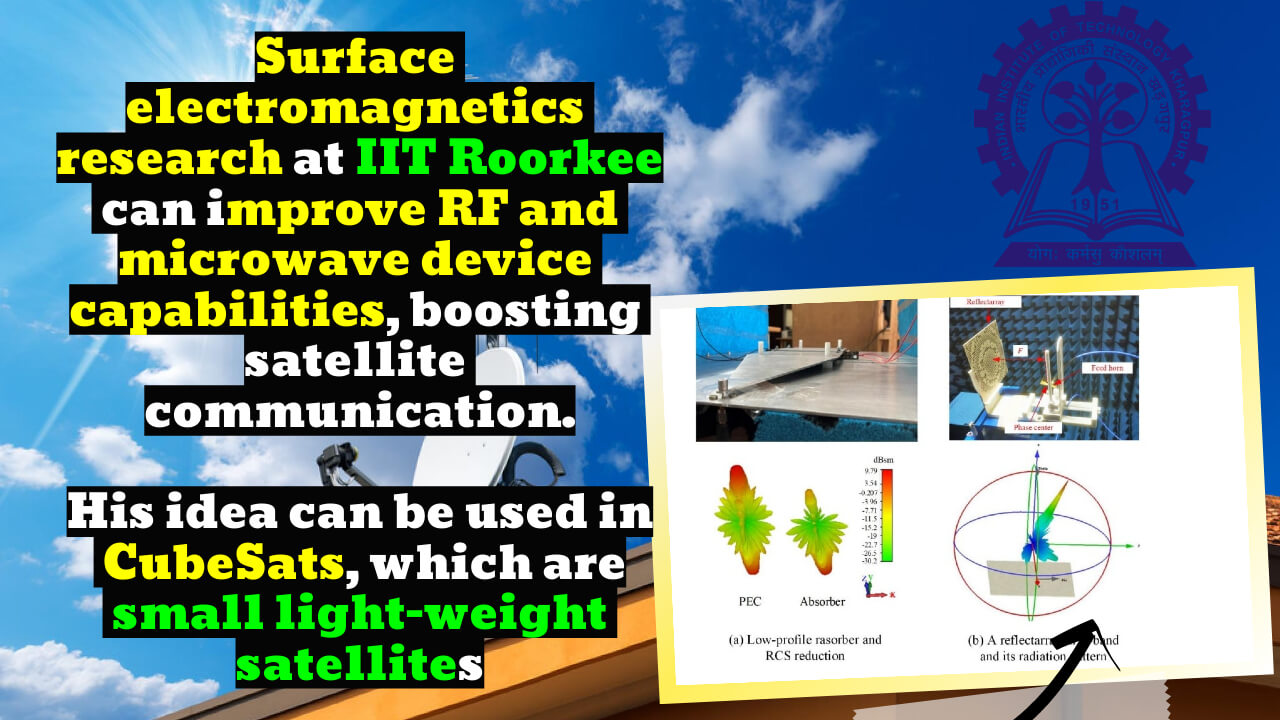Dr. Debidas Kundu is a faculty member at the Indian Institute of Technology, Roorkee, where he is an INSPIRE Fellow. He is working on new technology for defense and space research and communication with satellites. His design can be used in small; lightweight satellites called CubeSats, which are small and light.
Key Highlight:
- Dr. Debidas Kundu, an INSPIRE Faculty Fellow at the Indian Institute of Technology, Roorkee, works on enhanced satellite communication and military technology.
- In his project, he constructed two absorbers, one for surveillance radar and the other for secret communication.
- He’s also working on a high gain planar linearly polarized reflectarray antenna.
- His design can be employed in tiny lightweight CubeSats.
- His work on absorber and radome, which have uses in defense and strategic sectors, and his work on reflectarray, which can be utilized in satellite communications, will be patentable.
A faculty member at the Indian Institute of Technology, Roorkee, Dr. Debidas Kundu, is working on new technology for defense and space research and satellite communication. For example, his work on a strong, weather-resistant enclosure that protects a radar antenna can be used in defense and strategic fields.
In his project, he has made two absorbers that can hide from surveillance radar, while the other can also be used for secure communication.
He is also working on a wideband linearly polarized reflectarray antenna, a low-profile, planar, circuit board printed antenna that can provide a lot of gains, but it isn’t very big. His design can be used in small; lightweight satellites called CubeSats, small and light. A group of CubeSats in low earth orbit (LEO) could be a way to connect people all over the world through the internet of things (IoT). Like the one he has suggested, it can be good to use reflectarray antennas to make inter-satellite links (ISL) between the individual CubeSats so that the signal latency between them is cut down.
Dr. Kundu, an INSPIRE faculty member at IIT Roorkee, is working on surface electromagnetics, which is a new field in the field of RF and microwaves. He wants to use surface electromagnetics to make existing RF and microwave devices and circuits more powerful. He has set up a parallel plate waveguide measurement facility at IIT Roorkee so that he can get a wide range of measurements of reflection-transmission responses.
Patents will be filed on some of his work. He will also be moving forward with his work on absorber and radome, which can be used in the defense and strategic sectors, as well as his work on reflectarray, which can be used in satellite communications.




